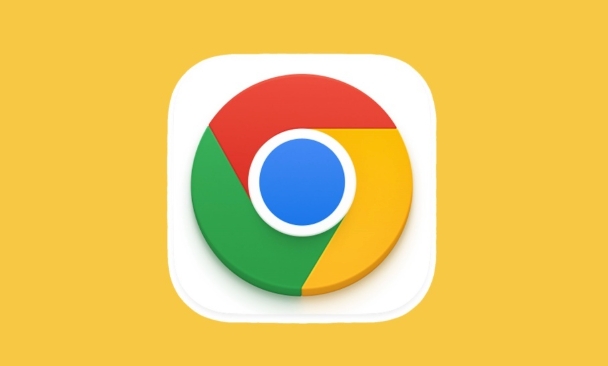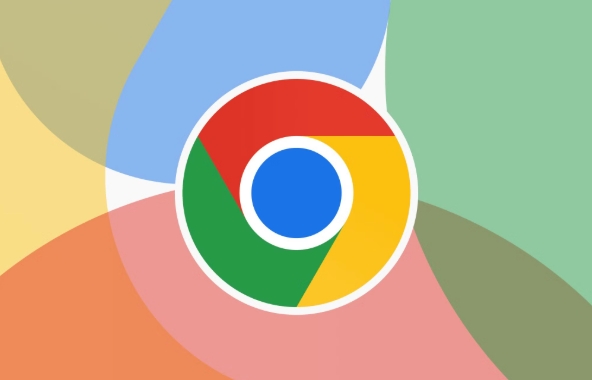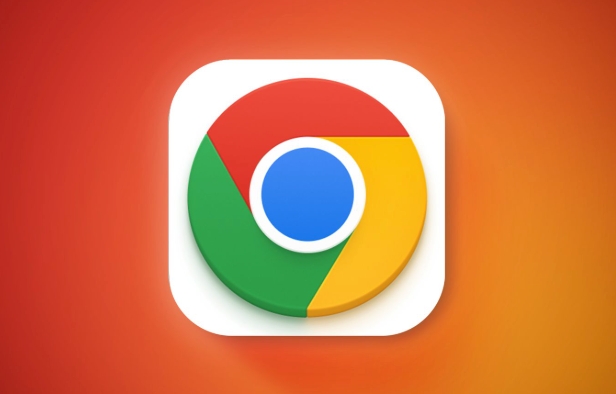How to use the chrome://net-internals proxy tab for debugging
Jul 20, 2025 am 01:05 AMChrome's Proxy tag is used to check how the browser handles proxy settings, helps diagnose issues such as page loading failures or proxy exceptions. 1. This tag records the proxy decision process for each request, including the configuration method used, DNS lookup and the selected proxy server; 2. You can view events such as PROXY\_CONFIG\_CHANGED, PAC\_SCRIPT, PROXY\_LIST\_OBSERVED and other events to determine the problem; 3. Common problems such as PAC file errors, improper proxy selection, and failed DNS resolution can be identified through logs; 4. Clear the log before use, filter specific domain names, and combine system proxy settings to improve troubleshooting efficiency.

When something's off with Chrome's network settings—like pages not loading or proxy misbehaving—the chrome://net-internals page can help dig into the root cause. The Proxy tab in particular is useful for checking how your browser handles proxy settings, especially when troubleshooting connection issues behind corporate networks or custom settings.

What the Proxy Tab Shows and Why It Matters
The Proxy tab inside chrome://net-internals/#proxy logs every proxy-related decision Chrome makes. It includes events like what configuration method was used (PAC file, system settings, etc.), DNS looksups related to proxies, and which proxy server was selected—or skipped—for each request.
This helps you understand whether:

- Chrome is using the expected proxy
- A PAC script is failing or returning unexpected results
- There are timeouts or unreachable proxies
If a site isn't loading and you suspect it's due to proxy routing, this is where you'd start digging.
How to Read Proxy Events Step by Step
Once you open the Proxy tab, you'll see a list of entries grouped by URL requests. Each entry has a timestamp and a set of events showing how Chrome determined the proxy route.

Here's how to interpret them:
- PROXY_CONFIG_CHANGED – Indicates when the proxy settings were updated (eg, after changing settings or switching networks).
- * PAC_SCRIPT events** – Show if a PAC file was fetched, parsed, or failed.
- PROXY_LIST_OBSERVED – Displays the actual proxy(s) chosen for that request.
- BYPASS_PROXY – If a request went directly without using any proxy, this event shows why.
Clicking an entry expands its details. Look at the sequence of events from top to bottom—they tell the story of how Chrome resolved the proxy decision.
If you see a PAC_SCRIPT_FAILED , check the URL of the PAC file—it might be unreachable or malformed. Also, watch for repeated fallbacks to direct connections, which could mean the configured proxy is down or unreachable.
Common Issues You Can Diagnose Here
This tool helps uncover several common problems:
- Misconfigured PAC files – If the log shows Chrome couldn't fetch or parse the PAC file, double-check the URL or local file path.
- Incorrect proxy being used – You may find that Chrome is routing traffic through an unexpected proxy. This often happens in managed environments where policies override user settings.
- DNS resolution failures on proxy hosts – Sometimes the proxy server name resolves incorrectly or not at all. The logs will show DNS errors linked to the proxy host.
- Bypass rules not working as intended – If internal URLs aren't bypassing the proxy as expected, the logs will reveal which rule matched or failed.
A good practice is to compare what should happen based on your setup versus what actually appears in the logs.
Tips for Using the Proxy Tab Effectively
Here are a few practical tips to make debugging easier:
- Clear the logs before reproducing the issue so you're only looking at relevant data.
- Use filtering options to focus on specific URLs or domains.
- Reload the page or retry the action while logging is active to capture fresh events.
- Check system-wide proxy settings too—if Chrome is set to use system proxies, the problem might not be in Chrome itself.
Also, remember that Chrome respects OS-level proxy settings unless overridden manually via command-line flags like --proxy-server .
You don't need to be a networking expert to get value out of this tab. Just follow the events, match them to what you expect, and spot where things go off track. Once you know what to look for, it becomes a quick way to isolate proxy-related problems.
Basically that's it.
The above is the detailed content of How to use the chrome://net-internals proxy tab for debugging. For more information, please follow other related articles on the PHP Chinese website!

Hot AI Tools

Undress AI Tool
Undress images for free

Undresser.AI Undress
AI-powered app for creating realistic nude photos

AI Clothes Remover
Online AI tool for removing clothes from photos.

Clothoff.io
AI clothes remover

Video Face Swap
Swap faces in any video effortlessly with our completely free AI face swap tool!

Hot Article

Hot Tools

Notepad++7.3.1
Easy-to-use and free code editor

SublimeText3 Chinese version
Chinese version, very easy to use

Zend Studio 13.0.1
Powerful PHP integrated development environment

Dreamweaver CS6
Visual web development tools

SublimeText3 Mac version
God-level code editing software (SublimeText3)
 How to stop Chrome from updating in the background on Mac
Jul 21, 2025 am 12:41 AM
How to stop Chrome from updating in the background on Mac
Jul 21, 2025 am 12:41 AM
To prevent Chrome from automatically updating on Mac, it can be done by disabling update services, modifying permissions, and restricting network access. 1. Use terminal commands to disable the GoogleSoftwareUpdate daemon to prevent background updates; 2. Modify update directory permissions to prevent Chrome from starting the update process by itself; 3. Restrict Chrome's outbound network connection through system firewall or third-party tools to further eliminate update requests. Using these methods in combination can effectively prevent Chrome from being automatically updated.
 How to fix Chrome's spell checker not working
Jul 20, 2025 am 12:03 AM
How to fix Chrome's spell checker not working
Jul 20, 2025 am 12:03 AM
When Chrome spelling check fails, you can troubleshoot and fix it by following the following steps: 1. Confirm that the "Use Spelling Check" function is enabled and check whether the corresponding language is enabled in the language settings; 2. Adjust the input language order, delete the redundant language, and ensure that the main language enables spelling check; 3. Close possible conflicting extensions, especially syntax or translation plug-ins; 4. Update Chrome to the latest version and check the operating system updates. If it still doesn't work, try resetting Chrome settings.
 How to stop Chrome from automatically opening PDF files
Jul 21, 2025 am 12:09 AM
How to stop Chrome from automatically opening PDF files
Jul 21, 2025 am 12:09 AM
To let Chrome download directly instead of opening it when clicking on the PDF link, 1. Enter chrome://settings/content/pdfDocuments to check "DownloadPDFfilesinsteadofautomatically opening theminChrome"; 2. Check whether there are plug-ins such as Lightpdf or Smallpdf interfering behavior, you can try to disable the test; 3. You can use the developer tools to copy the link and paste the new tag to trigger the download. The above methods can be selected according to the situation.
 How to fix screen tearing when scrolling in Chrome
Jul 25, 2025 am 12:55 AM
How to fix screen tearing when scrolling in Chrome
Jul 25, 2025 am 12:55 AM
The screen tear occurs when the Chrome browser scrolls, which is usually caused by the out-of-synchronization of rendering and refresh. The solutions are as follows: 1. Ensure that hardware acceleration is enabled, you can manually check the settings and restart the browser; 2. Forcefully enable Compositor and related options to optimize rendering; 3. Check the display refresh rate, use single-screen testing, and enable VSync or adaptive synchronization technology on supported devices; 4. Update the graphics card driver or replace the display interface such as using the DP interface. It is recommended to start the troubleshooting with simple steps and gradually adjust to find the best configuration.
 How to fix Chrome profile sync getting stuck in setup
Jul 25, 2025 am 01:10 AM
How to fix Chrome profile sync getting stuck in setup
Jul 25, 2025 am 01:10 AM
The problem of Chrome sync stuck can be solved through the following steps: 1. Check the network connection and Google account status to ensure normal access; 2. Log out and log in to the Chrome account again; 3. Clear the synchronized data and restart the browser; 4. Reset Chrome settings; 5. Try the traceless mode or new user profile. Sequentially checking can effectively restore the synchronization function.
 Chrome keeps opening new tabs by itself
Jul 22, 2025 am 12:22 AM
Chrome keeps opening new tabs by itself
Jul 22, 2025 am 12:22 AM
The problem of Chrome automatically popping up new tabs is usually caused by malicious extensions, advertising scripts, or browser hijacking. The solutions are as follows: 1. Check and uninstall suspicious extensions, especially ad-class plug-ins; 2. Clear browser caches and cookies to eliminate data corruption; 3. Check whether the homepage and default search engine settings have been tampered with and manually corrected; 4. Use antivirus software such as WindowsDefender or Malwarebytes to scan and clear potential malware; 5. Finally, try resetting Chrome settings to restore the default configuration. Troubleshooting in this order can effectively solve most abnormal labeling problems.
 How to fix Chrome opening new windows instead of tabs
Jul 26, 2025 am 01:29 AM
How to fix Chrome opening new windows instead of tabs
Jul 26, 2025 am 01:29 AM
1. Check whether the shortcut attribute has additional parameters and delete it; 2. Clear cache and switch startup settings, or create new user information; 3. Extend the impact and disable the problem plug-in through traceless mode. Chrome pops up new windows instead of tabs usually due to exceptions in shortcut parameters, cache configuration conflicts, or third-party extension interference. Check and adjust the corresponding settings in turn to resolve.
 How to fix Chrome when it's not printing correctly
Jul 26, 2025 am 02:46 AM
How to fix Chrome when it's not printing correctly
Jul 26, 2025 am 02:46 AM
Chrome printing exceptions can be solved in the following ways: 1. Check the printer selection, paper size, orientation, zooming and background graphics settings in the print preview; 2. Try stealth mode to eliminate extended interference and clear cache; 3. Update or reinstall the printer driver, replace the general driver or use the "Print as PDF" method; 4. Finally, you can reset the Chrome settings to restore the default. Most problems can be solved through the first few steps. If they still fail, you can export PDF to print.






